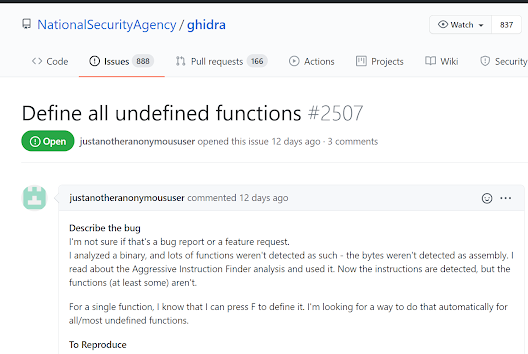Introduction
Using Ghidra disassembler to disassemble non-x86/x64 programs from architectures such as MIPS, Motorola, PowerPC, ... etc can be more error-prone than disassembling x86/x64 programs. One of the reasons for these errors is that Ghidra can misidentify some code bytes as data bytes. To address this issue Ghidra offers the experimental Aggressive Instruction Finder analysis, however, even when this analysis is enabled, Ghidra still misses a lot of code locations (bytes) and leaves them non-disassembled. This can be very annoying especially when using Ghidra's cross-references, since many disassembled functions can be without any caller functions in their cross-references list, as Ghidra is unable to locate these callers.
To fix code bytes (locations) misidentification, I wrote a Ghidra python script that attempts to force the disassembly of misidentified (non-disassembled) code bytes.
Next, the script prompts the user to enter the first instruction name, this is to specify what instruction we are interested in. For instance, if the script found matched bytes then to identify whether if they are truly code bytes (rather than data bytes) we need to make sure that the disassembled bytes will lead to the targeted instruction. For example, in this case, the specified bytes 4e56 if disassembled correctly it should be disassembled to the instruction link.





